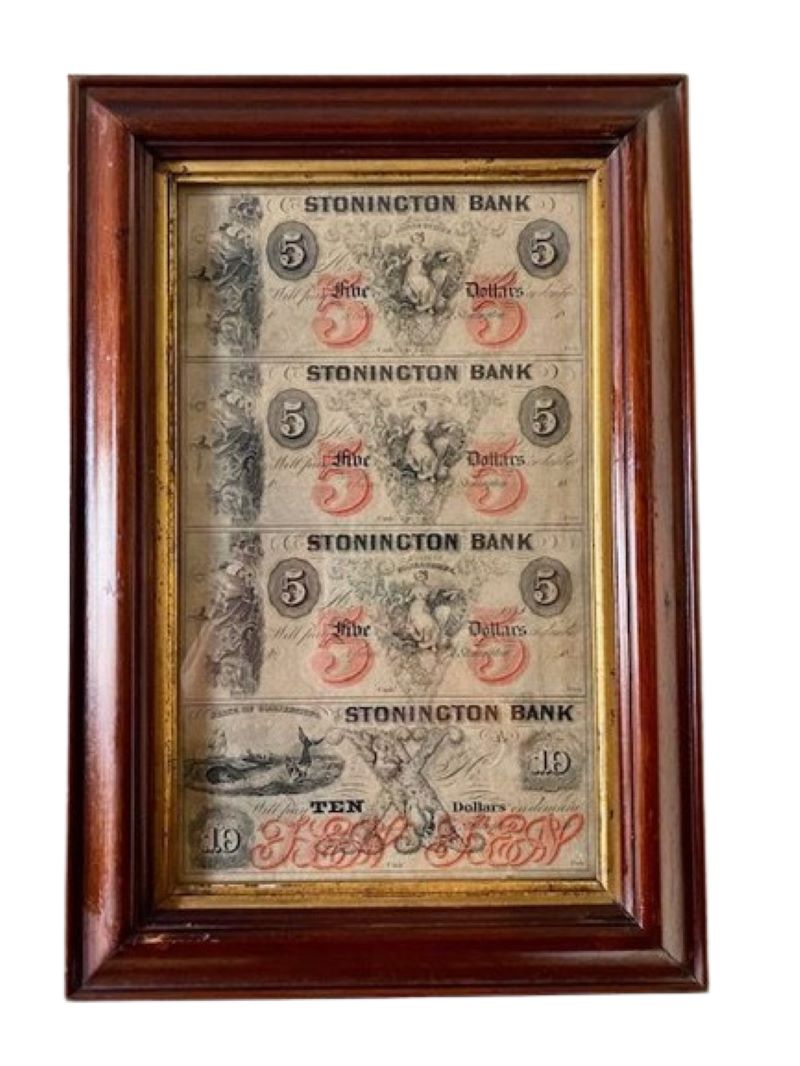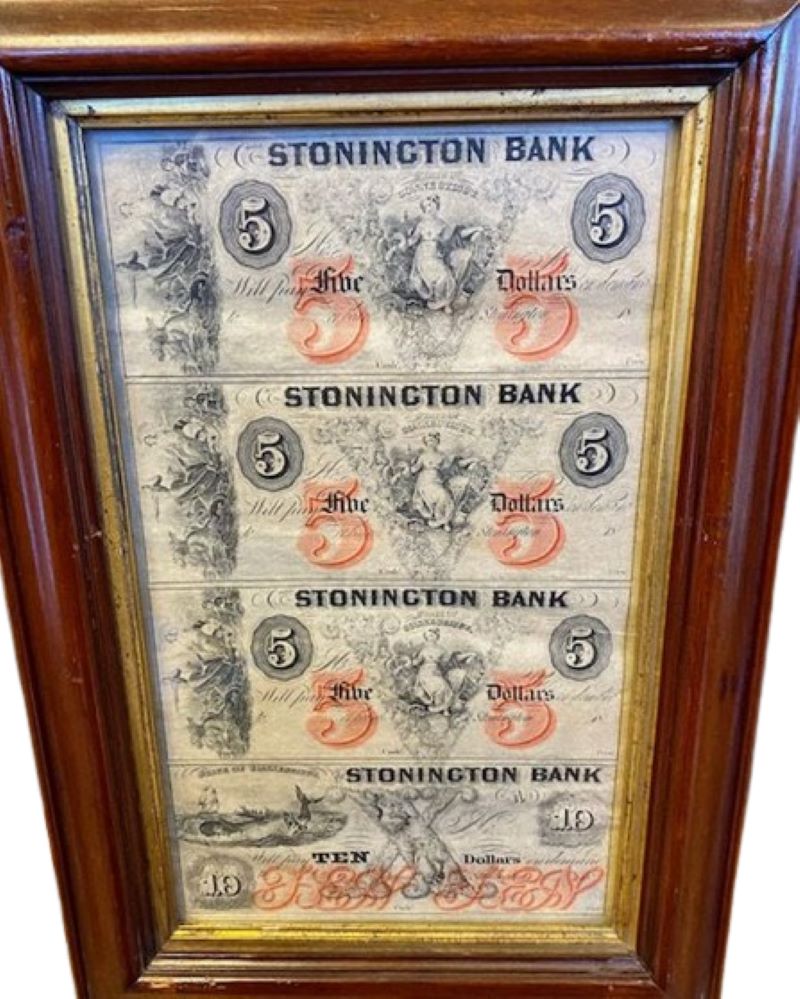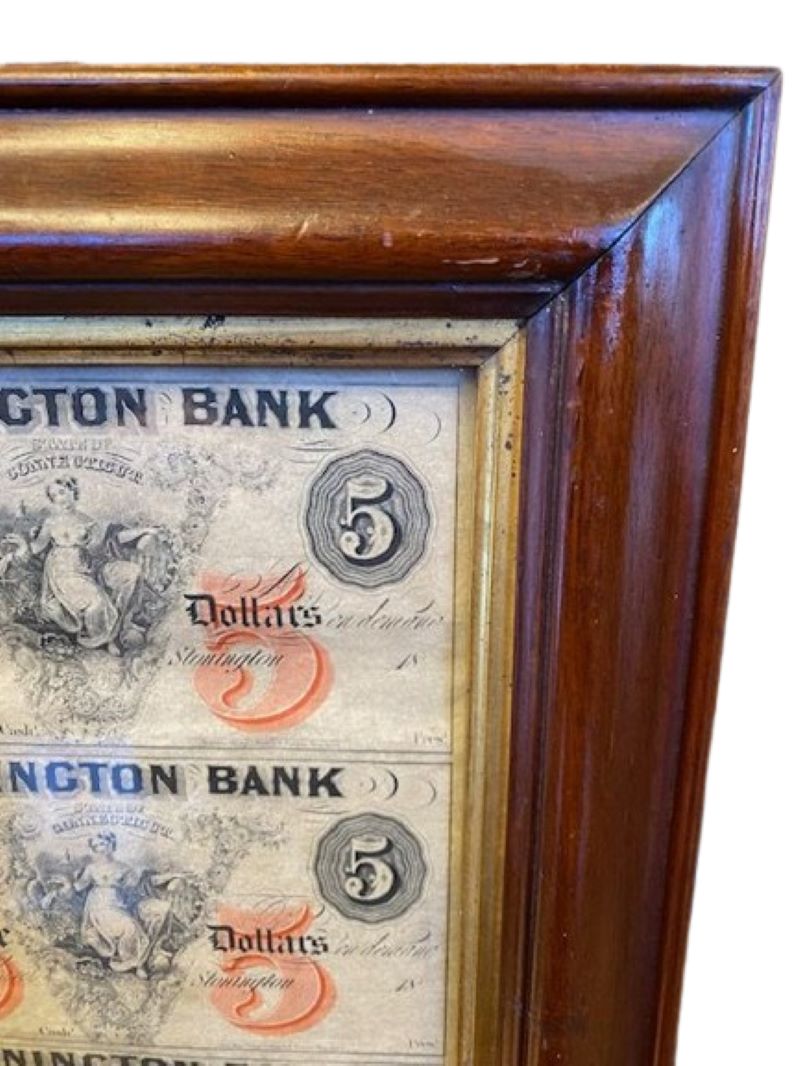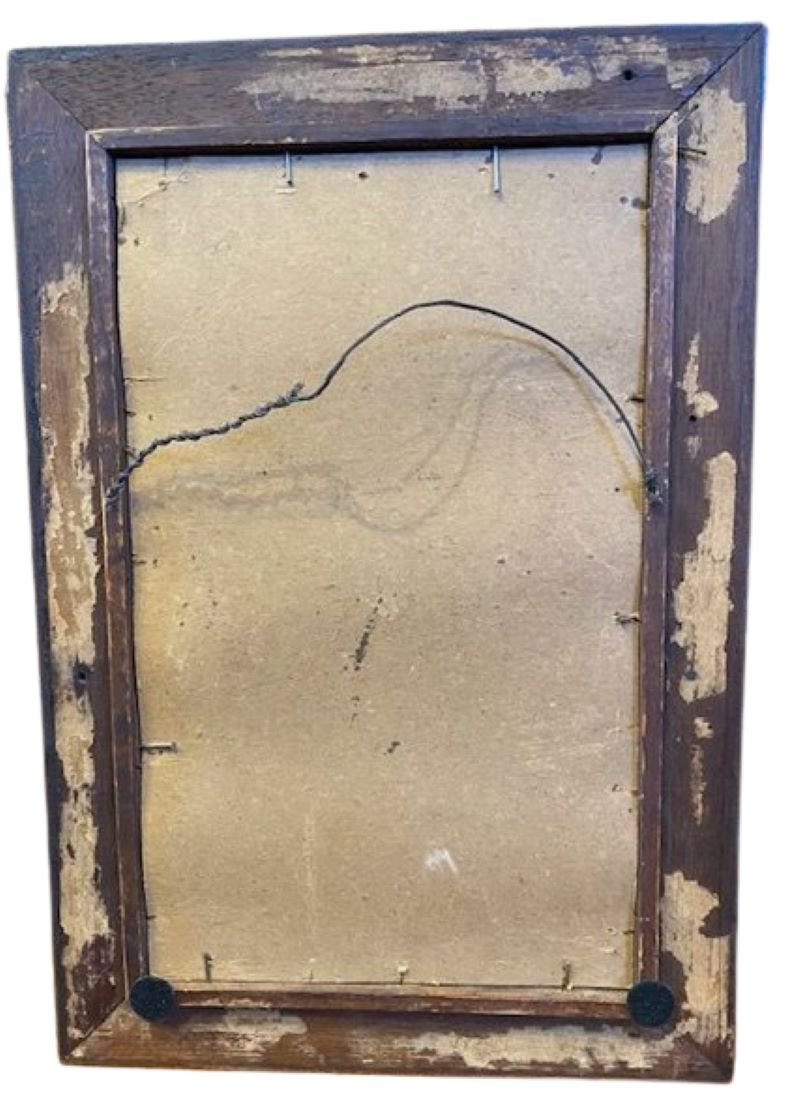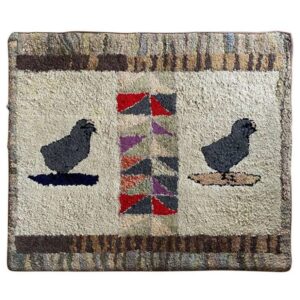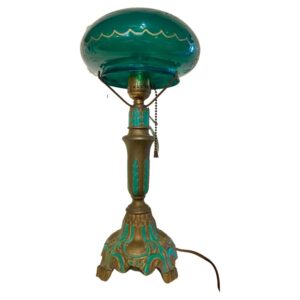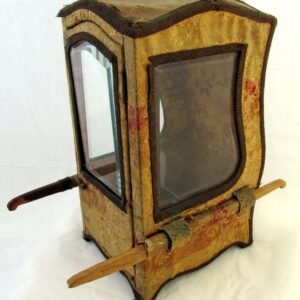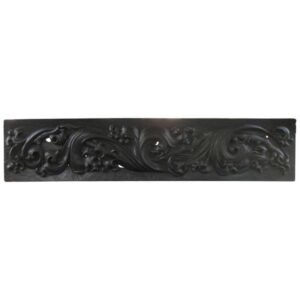Uncut Sheet of Nautical Decorated Commercial Banknotes, Circa 1850s – 1860s
Uncut Sheet of Nautical Decorated Commercial Banknotes, Circa 1850s – 1860s
$1,450.00
Uncut Sheet of Nautical Decorated Commercial Banknotes, Circa 1850s – 1860s, a polychromed printed sheet of obsolete commercial banknotes issued by the Stonington Bank of Stonington, Connecticut, in Five and Ten Dollar denominations.
In stock
Uncut Sheet of Nautical Decorated Commercial Banknotes, Circa 1850s – 1860s, a polychromed printed sheet of obsolete commercial banknotes issued by the Stonington Bank of Stonington, Connecticut, in Five and Ten Dollar denominations.
The Five Dollar notes feature a central allegorical image of a Neoclassical seated woman holding a Liberty Pole and scales, by a cornucopia, resting her foot on a globe: symbols of Liberty, Justice, Plenty, and Navigation – taken together she represents Lady Liberty or perhaps a version of Lady Columbia. A second vignette on the left side of the bill features the god Neptune and Lady Liberty riding the waves in a clam shell chariot pulled by Hippocampi (or seahorses).
The Ten Dollar note features a Whaling vignette in the upper left with a sperm whale in a flurry, one whale boat upended and a second approaching to lance, in the background a starboard bow view of a whaleship.
The sheet is in excellent uncut condition, mounted in a 19th Century walnut and parcel gilt frame.
Between 1781 up to 1935 private commercial banks issued banknotes in the United States, with only occasional governmental issues; in fact prior to the Civil War there were two federally chartered note‐issuing banks – the First and Second Banks of the United States (1791–1811 and 1816–1836). The commercial banks were legally required to redeem the notes for legal tender (usually gold or silver coin) when presented to the originating bank; as such they were used only in the local market and so generally none were produced in large numbers. Historically, banks sought to ensure that they could always pay customers in coins when they presented banknotes for payment. This practice of “backing” notes with something of substance is the basis for the history of central banks backing their currencies in gold or silver. It should be no surprise that such commercial banks issuing private banknotes were frequently in whaling ports, responsible for a majority of the gross national product at the time.
Measures: 15 in H x 10.25 in W

